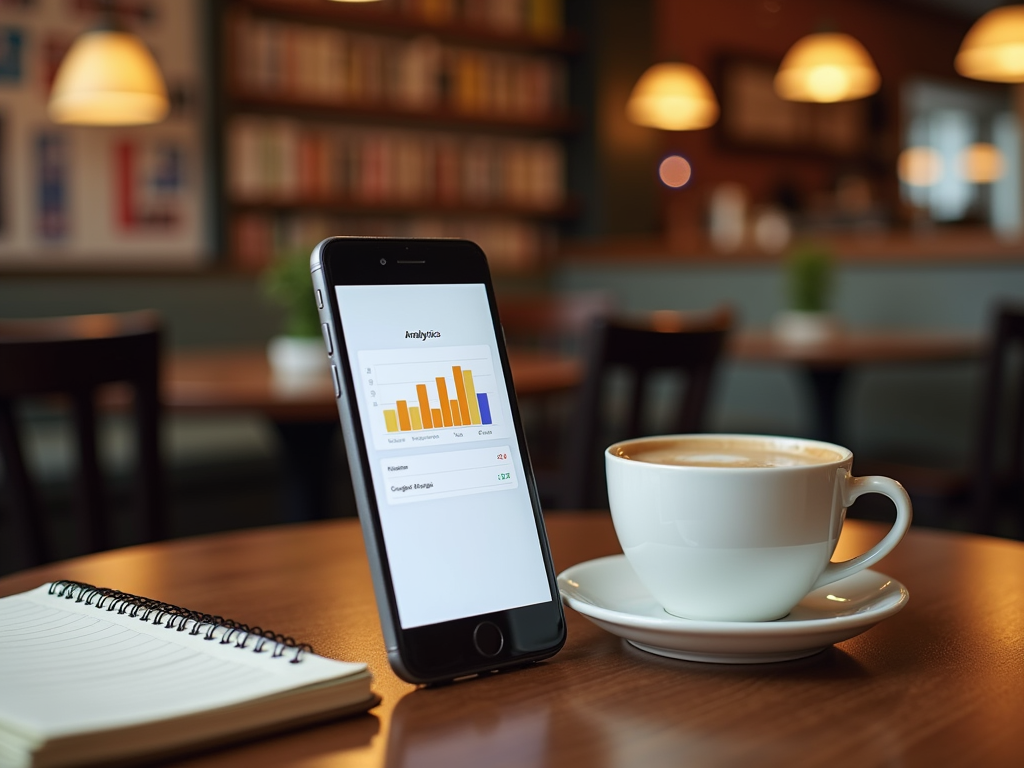Google Analytics is an essential tool that allows marketers to gain deep insights into user behavior on their websites. By leveraging its features effectively, businesses can make informed decisions that enhance performance and drive better results. This article will explore the best practices for utilizing Google Analytics to optimize your marketing strategies, ensuring that you fully harness the power of data to inform your campaigns.
Understand Your Audience With Segmentation

One of the most powerful features of Google Analytics is its ability to segment your audience into more manageable and informative groupings. Segmenting allows marketers to analyze specific user behaviors by demographic, geographic, or behavioral factors. This practice can uncover valuable trends and patterns that inform targeted marketing strategies. Here are some key aspects to consider when implementing segmentation:
- Demographic Segmentation: Analyze age, gender, and location data to better understand who your audience is.
- Behavioral Segmentation: Track user behaviors, such as frequency of visits, time spent on the site, and conversion rates.
- Traffic Source Segmentation: Identify where your traffic is coming from—organic search, paid ads, social media, etc.—to see which channels are most effective.
- Device Segmentation: Analyze performance on different devices, such as desktops, tablets, and mobiles, to optimize for user experience.
- Custom Segments: Create your own segments tailored to your specific marketing goals or campaigns.
By employing these segmentation techniques, marketers can create personalized experiences that resonate with their users, thus driving higher engagement and conversion rates.
Setting Up Goals and Conversions

Tracking conversions is crucial for any marketing strategy, and Google Analytics makes it straightforward to set up goals that align with your business objectives. Goals can represent various actions, such as newsletter sign-ups, product purchases, or form submissions, and help you measure the success of your marketing efforts. To set up effective goals in Google Analytics, consider the following steps:
- Define Your Goals: Clearly identify what actions you want your users to take and how these align with your business objectives.
- Choose Goal Type: Google accommodates different goal types such as Destination, Duration, Pages/Screens per session, and Event.
- Set Up Funnel Visualization: Create a visual path of the steps users should take to reach your goal, identifying potential drop-off points.
- Monitor Conversions: Regularly check the conversions’ reports to assess whether your marketing efforts lead to desired actions.
- Optimize Based on Data: Use the insights gathered to make data-driven adjustments to your marketing strategies.
By incorporating goals and conversion tracking, marketers can measure the effectiveness of campaigns, enhancing their approaches over time for maximum impact.
Leverage Real-Time Data
Real-time data is a significant feature of Google Analytics that allows marketers to view user activity as it happens. This can be particularly useful during launches, promotions, or major content releases. By monitoring real-time data, marketers can gain instantaneous feedback on user reactions, which can then inform immediate adjustments to marketing tactics. Here are some advantages of using real-time data:
- Quickly assess the impact of marketing campaigns and promotional events.
- Identify which channels are driving traffic and user engagement.
- Monitor on-page actions and user interactions to boost responsiveness and engagement during high-stakes moments.
- Gauge audience reactions to live events or product launches, allowing for timely campaign shifts if necessary.
- Enhance personalized marketing efforts by pushing tailored promotions based on real-time user behavior.
Integrating real-time data insights can be a game-changer for dynamic marketing, allowing businesses to respond proactively and strategically to audience behaviors.
Content marketing relies heavily on data-driven insights to shape strategies and improvements. Google Analytics provides valuable information about what types of content perform best. By analyzing metrics such as page views, average time on page, and bounce rate, marketers can discern which pieces of content resonate with their audience. Here are several practices for using Google Analytics to enhance content marketing:
- Identify Top-Performing Content: Analyze which posts or pages receive the most traffic to replicate their success.
- Assess User Engagement: Monitor metrics like average time on page and scroll depth to understand how users interact with your content.
- Pinpoint Drop-offs: Use exit pages reports to identify where users leave your site, prompting content adjustments.
- Optimize for SEO: Evaluate organic search traffic to highlight successful keywords and phrases for future content creation.
- A/B Testing: Experiment with different types of content (e.g., videos vs. articles) to measure user engagement variability.
By focusing on these aspects, content marketers can create more impactful strategies and deliver what their audience truly wants.
Regularly Analyze and Adjust Your Marketing Strategies
Analytics is not a one-time effort but an ongoing process of review and revision. Regularly analyzing insights leads to the continuous improvement of marketing strategies. It’s vital for marketers to cultivate a habit of periodic review of Analytics reports, which facilitates the identification of trends, seasonal variations, and opportunities for optimization. Here are actionable steps to keep your marketing strategies aligned with insights:
- Schedule Regular Reviews: Create a routine to review analytics data, whether weekly, monthly, or quarterly.
- Utilize Dashboards: Set up customized dashboards in Google Analytics that highlight key performance indicators (KPIs).
- Share Insights with Teams: Ensure that insights are communicated across teams to align goals and strategies.
- Test and Implement Changes: Once insights are gathered, implement necessary changes and monitor their impact on performance.
- Stay Updated: Regularly keep abreast of updates and new features offered by Google Analytics to leverage them effectively.
These practices will help marketers stay agile and responsive to market dynamics and user needs.
Conclusion
Effectively utilizing Google Analytics can provide marketers with the edge needed to optimize their strategies and ultimately enhance their business outcomes. By understanding your audience through segmentation, setting up clear goals, leveraging real-time data, using insights for content marketing, and regularly analyzing performance, you can navigate the path to more efficient and impactful marketing. The ability to connect the dots between data and action is what differentiates successful marketing campaigns from uninformed attempts.
Frequently Asked Questions
1. What is Google Analytics?
Google Analytics is a web analytics service that enables businesses to track and report website traffic, offering deeper insights into user behavior and engagement.
2. How can I segment my audience effectively in Google Analytics?
Effective audience segmentation can be achieved by analyzing various user attributes such as demographics, behaviors, traffic sources, and devices to tailor marketing strategies.
3. What types of goals can I set in Google Analytics?
You can set up different types of goals in Google Analytics, such as Destination (specific page views), Duration (time spent), Pages/Screens per session, and Event (specific user actions).
4. How often should I review my Google Analytics data?
It is advisable to review Google Analytics data regularly—monthly or quarterly is common—to stay updated on trends and adjust marketing strategies accordingly.
5. What are the benefits of utilizing real-time data in Google Analytics?
Utilizing real-time data allows marketers to gauge immediate user reactions, assess traffic sources, and adjust marketing efforts on the fly during critical events or promotions.
